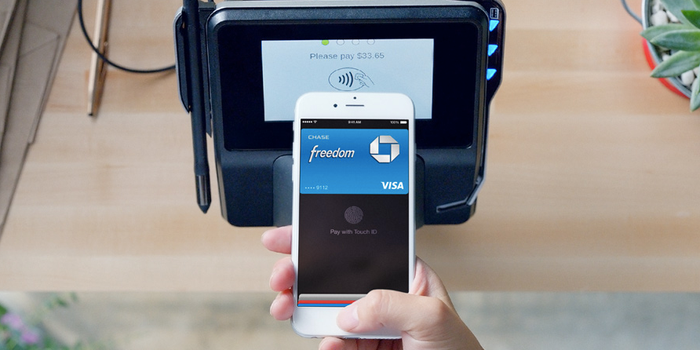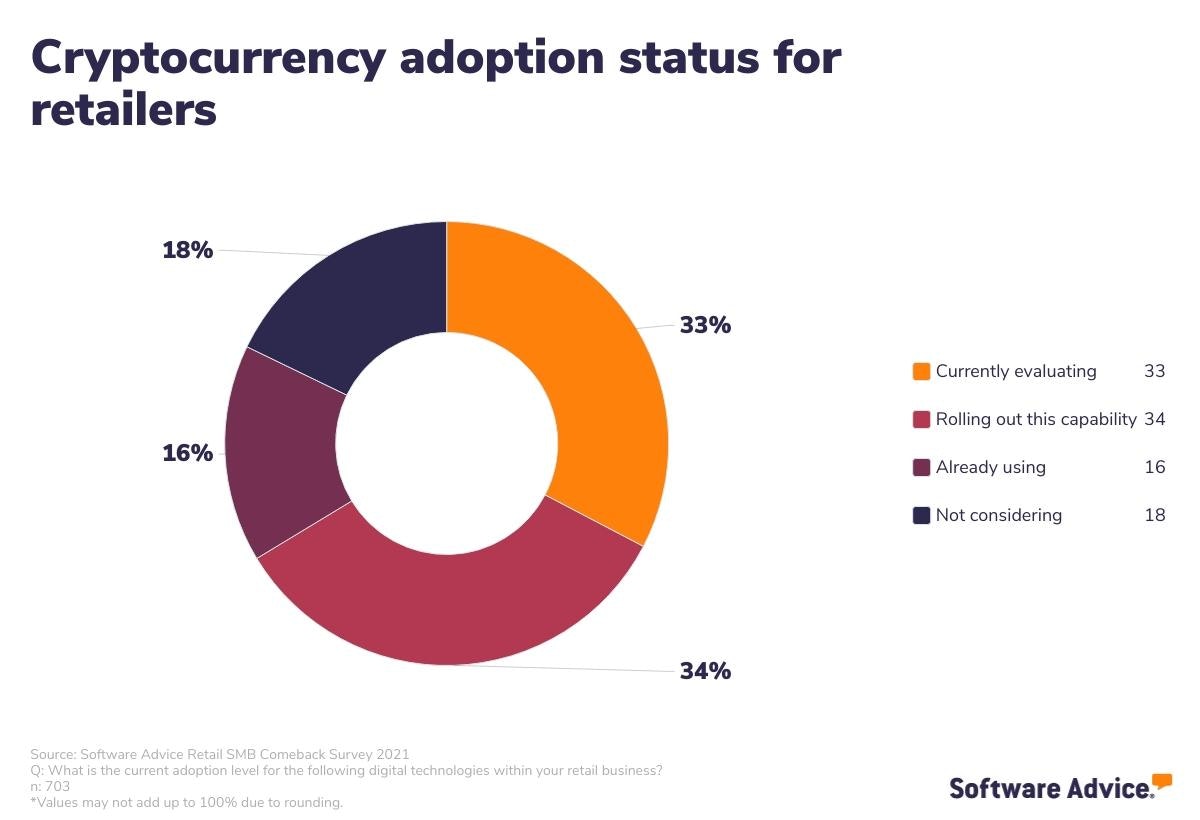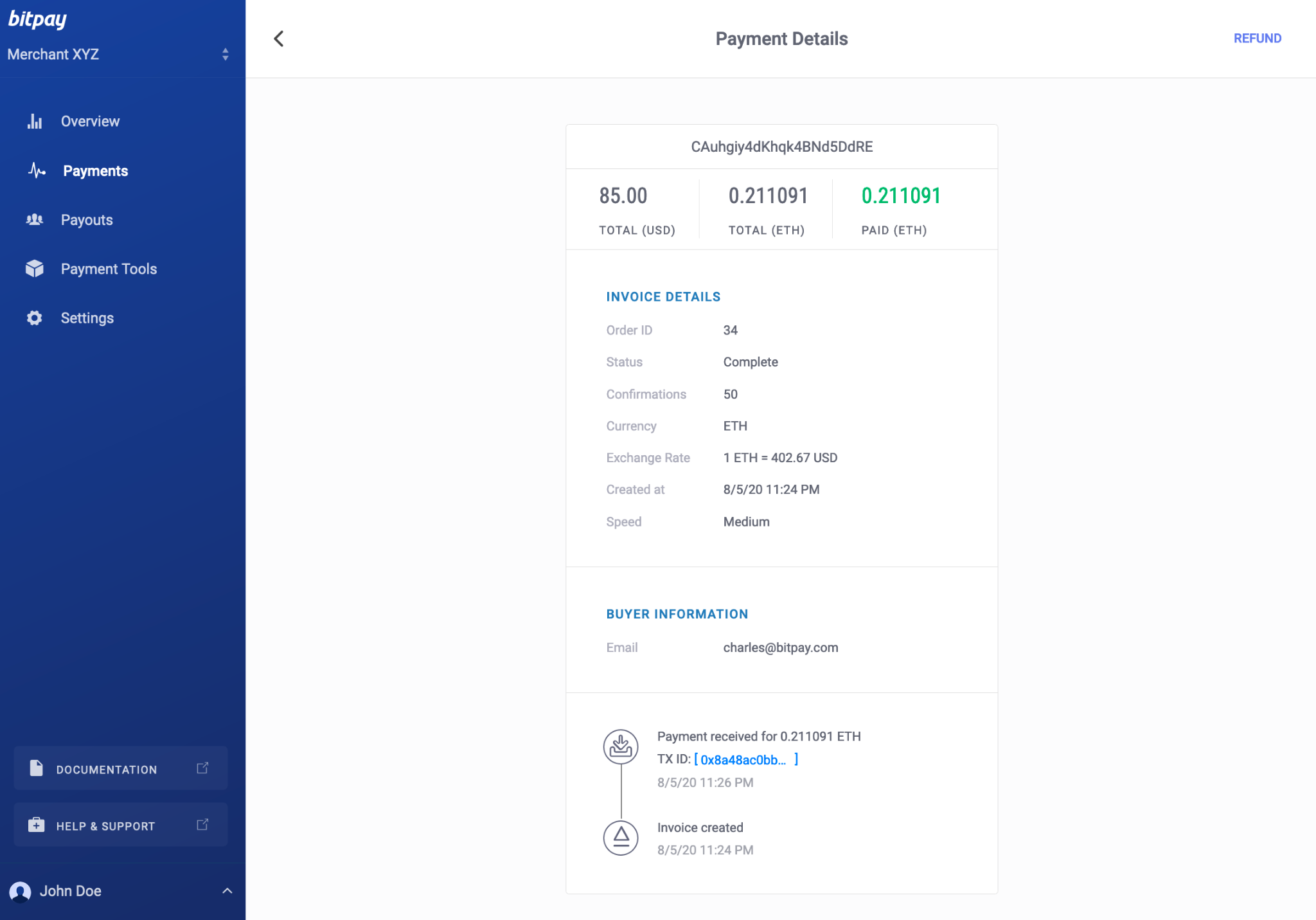Want More Sales? Consider Adopting These 3 Alternative Payment Methods
2020 saw the use of cash decline among consumers of all ages while digital wallet usage increased by nearly 24% year-over-year.
This tells us that while cash and cards still reign supreme, alternative payments are gaining traction—and the retailers that invest in them will have the edge over their competitors.
In this article, we’ll introduce you to some of the most popular alternative payment methods and explain how you, a retail owner, can benefit from adopting them.
What are alternative payment methods?
Alternative payment methods (APM) are any number of ways to make purchases digitally, such as with a mobile payment application, digital wallet, or alternative currency. Cash and major credit cards are not considered alternative payment methods.
Anytime you make a purchase using a mobile payment app, cryptocurrency, or money order, you are using an alternative payment method. Additionally, peer-to-peer payments, electronic checks, and direct transfers from bank accounts are also considered alternative payment methods.
Sounds like a lot, right? Well, don’t worry: Diversifying the way customers can pay for your goods or services can be beneficial, but not all of these methods are mainstream enough to invest in for your business. We’ll cover the top three APMs for retailers, but first, let’s talk about why they should matter to retailers.
Why are alternative payment methods important for retailers?
To understand why APMs are important for retailers, let’s discuss why they’re important to consumers.
Consumers value convenience and choice, and they are motivated to use APMs for a variety of reasons. Gartner asked U.S. consumers to rank the top three factors that would influence them to adopt a new payment method (full content available to clients). The top reasons they chose were:
To make payments more secure
To obtain a financial reward for using a new payment method
To avoid the fees or charges of using a current payment method
Providing a range of payment options at checkout enables your customers to make purchases in a way that they prefer, which increases their loyalty to your business and gives you an advantage over competitors that only offer traditional forms of payment.
Next, we’ll cover three alternative payment methods gaining popularity that you as a retailer should consider investing in now.
3 alternative payment methods for retailers to consider adopting
1. Digital wallets and mobile payments
A digital wallet (sometimes called an e-wallet) is an application that allows users to make electronic transfers, either in the form of peer-to-peer payments or a direct transaction to a third-party seller. PayPal is an example of a digital wallet app.
Mobile wallets are slightly different; they are considered digital wallets but with the added feature of being able to make contactless payments in-store. GooglePay, Apple Pay, Samsung Pay, and Android Pay are all examples of mobile wallets.

Consumers can use Apple Pay to make purchases with their smartphone (Source)
Mobile payments and digital wallets may be the most ubiquitous alternative payment method today. In fact, in a recent Software Advice survey we polled over 700 retail owners and managers and found that 67% of respondents implemented digital wallet or mobile payment methods either before or during 2021.
In a time when 85% of the U.S. population has a smartphone, accepting mobile payments at your retail business only makes sense. Plus, it’s an investment that pays off: When asked, nearly a third of retail owners cite mobile payments as having the biggest impact on driving sales.
Luckily for retailers, many POS (point of sale) systems are already optimized to accept mobile payments. If you’re ready to invest in mobile payments, talk with your POS software vendor to see if that feature is available with your current system.
2. Alternative currencies
Alternative currencies are a form of tender that can be used as a substitute for a legal fiat currency. Organizations and individuals can create alternative currencies, and they are not regulated by banks or national governments in the same way as traditional currencies.
Cryptocurrencies such as Bitcoin and Ethereum fit into this category, as well as rewards program points that can be exchanged for goods (such as Starbucks Stars or Amazon Coins).

Cryptocurrencies typically have lower transaction fees than credit cards and, like cash, transactions made with cryptocurrency are final (which protects merchants from fraudulent chargebacks). Plus, if you have an ecommerce store, accepting cryptocurrency is a strong business move because you can tap into a new customer base—for example, you can easily accept payment from customers in other countries.
These are just some of the reasons many retailers (50%) are already using or rolling out cryptocurrency technology and reaping the benefits.
If you’re interested in cashing out on crypto, we recommend using online payment software to convert Bitcoin and other cryptocurrencies to your local currency upon receiving it. This is because the value of cryptocurrencies fluctuates, and converting the payment immediately will help you avoid losing money.

An invoice for a purchase made with Ethereum in BitPay (Source)
Tools such as Coinbase Commerce and BitPay can help you set up your ecommerce store so you can accept cryptocurrency as a form of payment.
3. Retail financing options
Traditionally, financing options have been reserved for large expenses such as buying a home, car, or household appliances. But today, financing for smaller retail purchases is becoming more and more common.
Retail financing allows customers to make purchases with lines of credit that exist outside of traditional credit cards. Meaning, consumers can pay for products in installments through a third-party financing application—an approach that can help those who otherwise could not afford the full cost of the purchase upfront.
As you can imagine, allowing customers to pay off purchases in installments can lead to a higher conversion rate. Klarna, an installment payment app, claims that businesses that have adopted their platform have seen a 45% increase in average order value and a 30% increase in conversion.
Many retail businesses are already catching on to the benefits of offering financing options. For instance, our survey revealed that 40% of retailers are currently rolling out deferred or buy now, pay later payment options for customers.
Online payment apps can integrate with your ecommerce store and make it easy to offer financing options to your customers. You can find a tool that does this by browsing our online payment software directory and looking for tools with financing features.
Even if your business doesn’t have an ecommerce store, there are still tools out there that can integrate with your POS system to offer financing—Sunbit is just one example of a company that provides a buy now, pay-over-time option for in-store purchases.
If you aren’t set up for ecommerce, you should be. Check out this article detailing why every store should have an online component and read our tips for how to get started:
Capture more sales with the right software
Accepting new payment methods from your customers is an easy way to bring in more business and improve your customer experience, and in this era, refusing to do so could cause you to lose out to your competitors who do.
The good news is that alternative payment solutions aren’t that far out of reach. All you need to do is evaluate your current retail software stack. Consider what features are missing and ask your vendors if upgrades are available. If you need more help, talk to one of our retail software advisors and they’ll recommend five top-rated systems that work best for your unique criteria—free of charge.
Here’s a recap of the specific kinds of tools we mentioned and how you can use them:
Retail point of sale (POS): These systems process retail transactions, but also include inventory management, sales reporting, and analytics features. Today, many POS tools are built to accept mobile wallet payments. Talk to your vendor to see what kind of alternative payment method functionalities are offered with your POS system.
Online payment software: From financing to cryptocurrency, these tools can help upgrade the payment process for your ecommerce store. With online payment software, you can manage a gift card program, start a loyalty program, and set up customers with subscriptions.
Survey methodology
The Software Advice Retail SMB Comeback Survey 2021 was conducted in June 2021. We surveyed 703 retail owners and managers. Respondents were screened for full-time employment at small and midsize retailers. We worded the questions to ensure that each respondent fully understood the meaning and the topic at hand.
Note: The applications selected in this article are examples to show a feature in context and are not intended as endorsements or recommendations. They have been obtained from sources believed to be reliable at the time of publication.